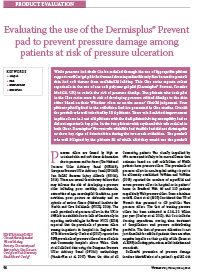There are estimated to be 3.6 million people in the UK with diabetes, which equates to one in every 16 people (Diabetes UK, 2016). It is also estimated that 2–2.5% of patients with diabetes will have an active foot ulcer (Kerr, 2017).
Diabetic foot ulcers (DFU) are predisposed to peripheral arterial disease and/or peripheral neuropathy. Once a foot ulcer has occurred these factors, in addition to infection, contribute to the delay in normal wound healing continuum in the person with diabetes (Dowsett and Newton, 2005; Young et al, 2013; Guest and Vowden, 2015; NHS England, 2017). A DFU that is delayed in healing is classified as a chronic ulcer. Recognizing the severity and likelihood of chronicity requires a valid and reliable baseline assessment tool. For DFU the SINBAD (Site, Ischaemia, Neuropathy, Bacterial infection, Area and Depth) classification system has been shown to help identify the baseline characteristics and provide a score to indicate severity and healing times (Ince et al, 2008; NHS Digital, 2018). Each element of the SINBAD score is scored in a binary format with a maximum score of 6 achievable (Ince et al, 2008). A SINBAD score of 3 or more is considered a severe, or complicated DFU and the time to heal range is 126–577 days versus a SINBAD score of 2 or less, which is considered a less severe DFU with a mean healing time of 77 days (NHS Digital, 2018). The SINBAD scores of the patients within the case series are shown in Table 1.







